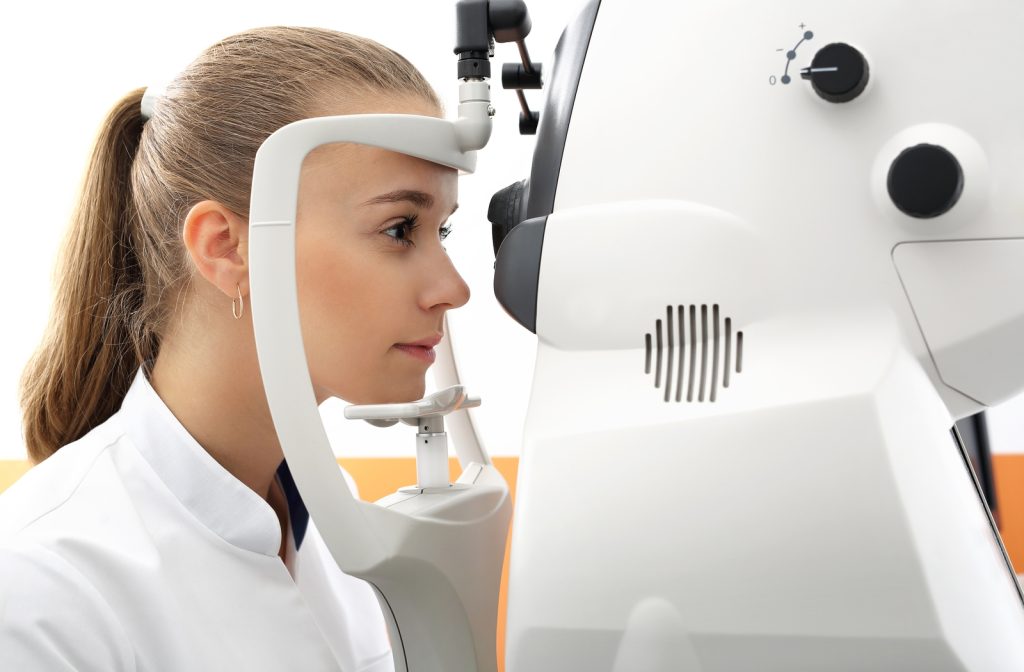Visual field testing is essential in diagnosing and managing various eye conditions, including glaucoma and neurological disorders. These tests assess a patient’s peripheral vision and detect blind spots, helping optometrists determine the severity of visual impairment.
CPT code 92083 is a key billing code for comprehensive visual field examinations, allowing providers to document and receive reimbursement for these critical diagnostic tests. In this article we’ll explore what this CPT code means, its role in optometry and billing best practices to ensure maximum reimbursement.
What Is CPT Code 92083?
CPT code 92083 refers to a visual field examination with extended threshold testing. This test provides a detailed analysis of a patient’s peripheral vision and detects abnormalities that may indicate underlying conditions such as glaucoma, optic nerve damage, or retinal disorders.
Glaucoma alone affects over 3 million Americans, with half of them unaware they have the disease due to its gradual onset. Visual field testing, like the one billed under CPT 92083, is crucial in diagnosing and managing such conditions before significant vision loss occurs.
Unlike simpler screening tests, 92083 is used when a more in-depth assessment is required, often utilizing automated perimetry to measure visual sensitivity at various points in the visual field. Proper use of this code ensures that optometrists receive appropriate reimbursement for providing this advanced diagnostic service.

Clinical Applications of CPT Code 92083
Optometrists and ophthalmologists commonly use CPT code 92083 to evaluate patients at risk for vision loss. This test is particularly important for individuals with glaucoma, optic neuropathy, or neurological conditions affecting vision.
Patients experiencing unexplained vision changes, blind spots, or reduced peripheral vision also benefit from this assessment, as it helps detect early signs of progressive eye diseases. By measuring the extent of visual field loss, eye care professionals can make informed treatment decisions and monitor disease progression over time.
Billing and Reimbursement for CPT Code 92083
Accurate documentation is crucial for securing reimbursement when billing CPT code 92083. Optometrists must clearly indicate the medical necessity of the visual field test, especially for conditions like glaucoma, optic nerve disorders, or unexplained vision loss.
Using the correct ICD-10 diagnosis codes is essential for claim approval. Common codes associated with this test include:
- H40.9 – Unspecified glaucoma
- H47.2 – Optic atrophy
- H53.4 – Visual field defects
Insurance providers may have frequency limitations on how often this test can be performed within a given period. Understanding payer-specific guidelines helps minimize claim denials and ensures timely reimbursement.
Billing Best Practices
To avoid billing errors and ensure proper reimbursement, optometry practices should follow best practices, such as:
- Using the correct ICD-10 codes that support medical necessity.
- Ensuring thorough documentation of the patient’s condition and need for testing.
- Checking payer guidelines for frequency limitations and coverage requirements.
- Submitting clean claims to reduce the risk of denials and payment delays.
Following these billing strategies helps streamline revenue cycle management and maintain financial stability for optometry clinics.

Conclusion
CPT code 92083 is essential for diagnosing and managing visual field impairments, enabling optometrists to accurately assess peripheral vision loss and track disease progression. Proper documentation and billing practices are crucial for maintaining compliance and ensuring timely reimbursement.
Partnering with a trusted optometry billing company can significantly enhance your practice’s financial efficiency. Our expert billing services ensure streamlined claim submissions, reduced errors, and optimized revenue cycle management, giving you more time to focus on what truly matters – providing outstanding care to your patients.

With a strong background in the marketing industry and healthcare leadership roles, Filip is responsible for CLICKVISIONBPO’s sales strategies and onboarding new clients. With a passion for sharing insights gained from his experience, he also shares valuable knowledge through industry related articles.
